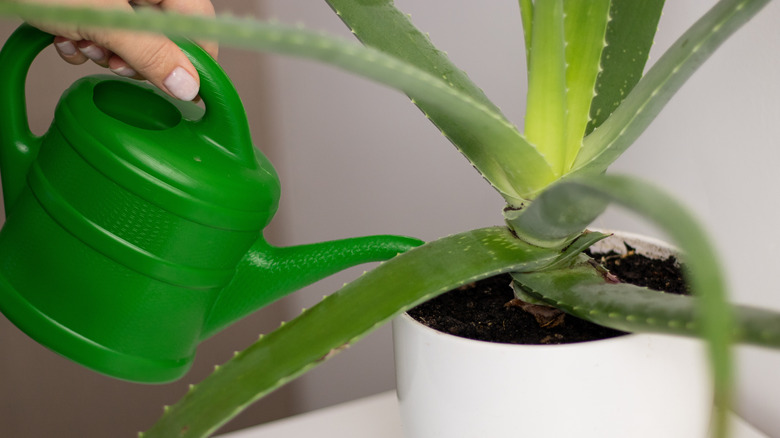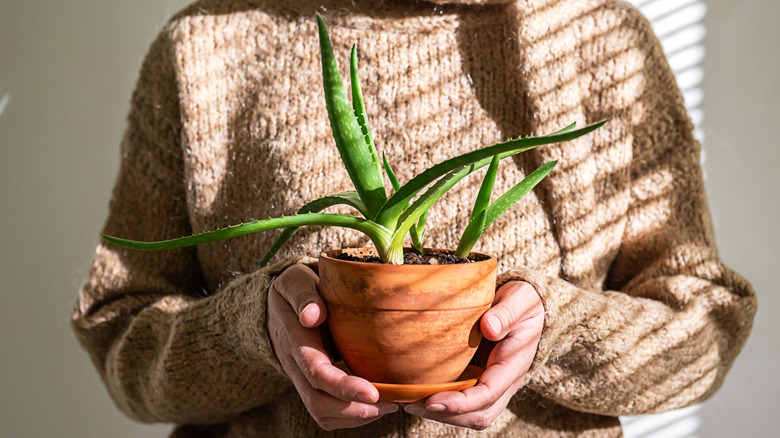How Often You Should Really Be Watering An Aloe Vera Plant
A familiar ingredient in skin salves, soothing lotions, and even specialty beverages, aloe vera has earned its spot as a well-known medicinal plant. Native to the desert regions of Africa and the Arabian Peninsula, aloe vera (Aloe barbadensis miller) has been used to treat burns and wounds for thousands of years. It's also a popular houseplant that thrives in a sunny kitchen or beside a bright window. While caring for your aloe vera is relatively easy, it can be difficult to gauge how often this drought-tolerant succulent needs water. In truth, it all depends on the season.
Aloe vera, an evergreen member of the Asphodelaceae family, knows how to survive in harsh, hot weather. Like other succulents hardy to USDA Hardiness Zones 10 and above, its leaves contain specialized cells that retain enough water to sustain the plant during periods of intense drought. This gives the leaves their characteristic squishy texture. In a natural habitat, the aloe vera's roots dry out completely between rains, and the plant supplements itself with stored moisture.
But when temperatures drop in winter, aloe vera enters a period of dormancy during which its growth slows and it requires far less water. When kept outdoors, this helps the plant retain energy for spring flowering — an impressive yellow-orange inflorescence that only appears once a year. Although it's rare to see an aloe vera plant flower indoors, following the same cycle of dormancy and reducing watering frequency during winter can have a profound effect on your plant's health.
Keep your aloe healthy in winter by watering less frequently
For the most part, taking care of your aloe vera plant is an easy task. The succulent doesn't require much pruning, and its slow growth means it won't need to be repotted often. But when it comes to watering, your aloe vera plant is a bit more particular. Too little water, and the leaves will begin to shrivel and lose their characteristic puffiness. Too much water, and your aloe vera's roots won't receive enough oxygen and could start to rot.
While it's not impossible to fix an overwatered aloe vera plant, it can be quite difficult, and your plant may not survive if left untreated for long. A good rule of thumb is to give your aloe vera plant a thorough watering after the soil dries completely. Using a pot with drainage holes increases air flow and allows excess water to flow away from the plant's roots, which may help your plant dry out faster. Naturally absorbent clay pots may also help draw extra water away from your plant's roots.
During spring and summer, your plant's active growing season, this might mean watering every one or two weeks, depending on the size of your pot and your home's humidity. But as temperatures drop in fall and your plant enters its dormancy period, reduce your watering schedule to once every three weeks. When winter hits, you might even be able to get away with watering just once a month.

